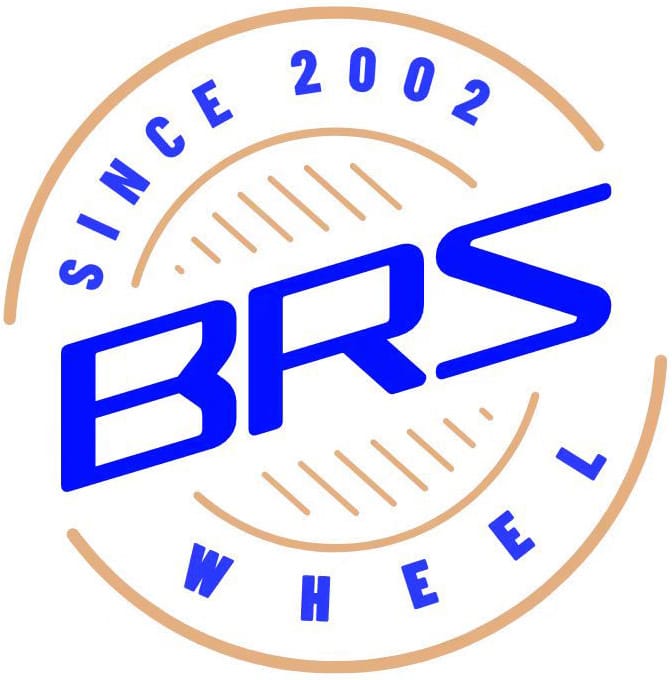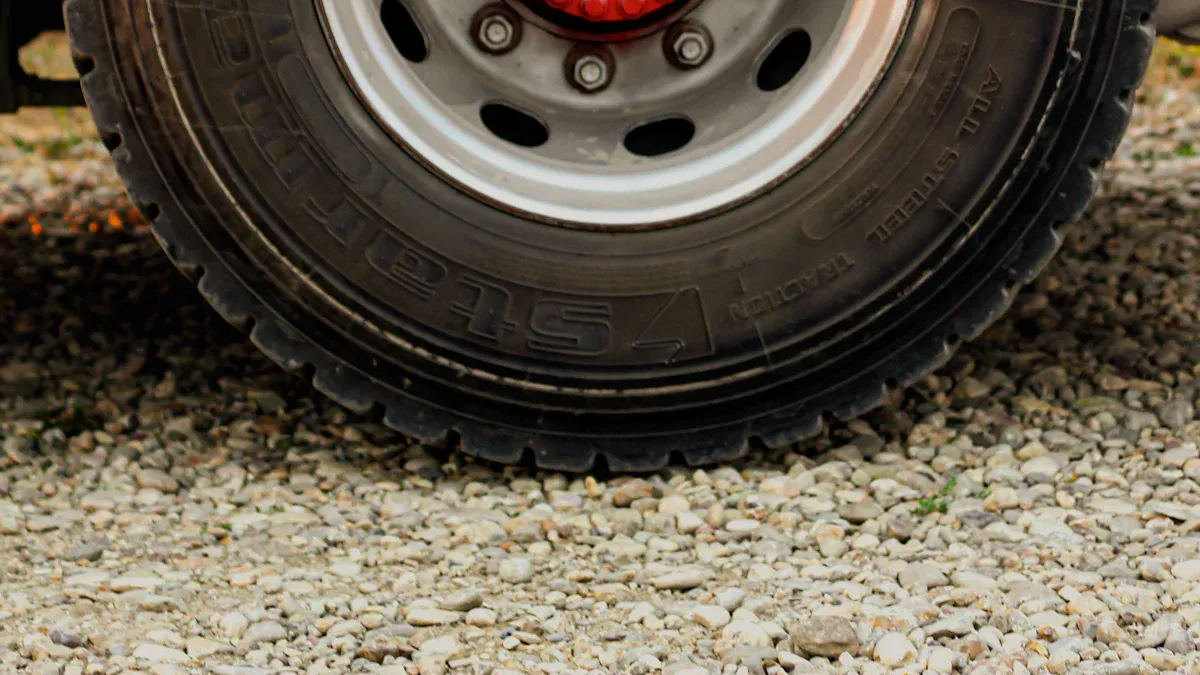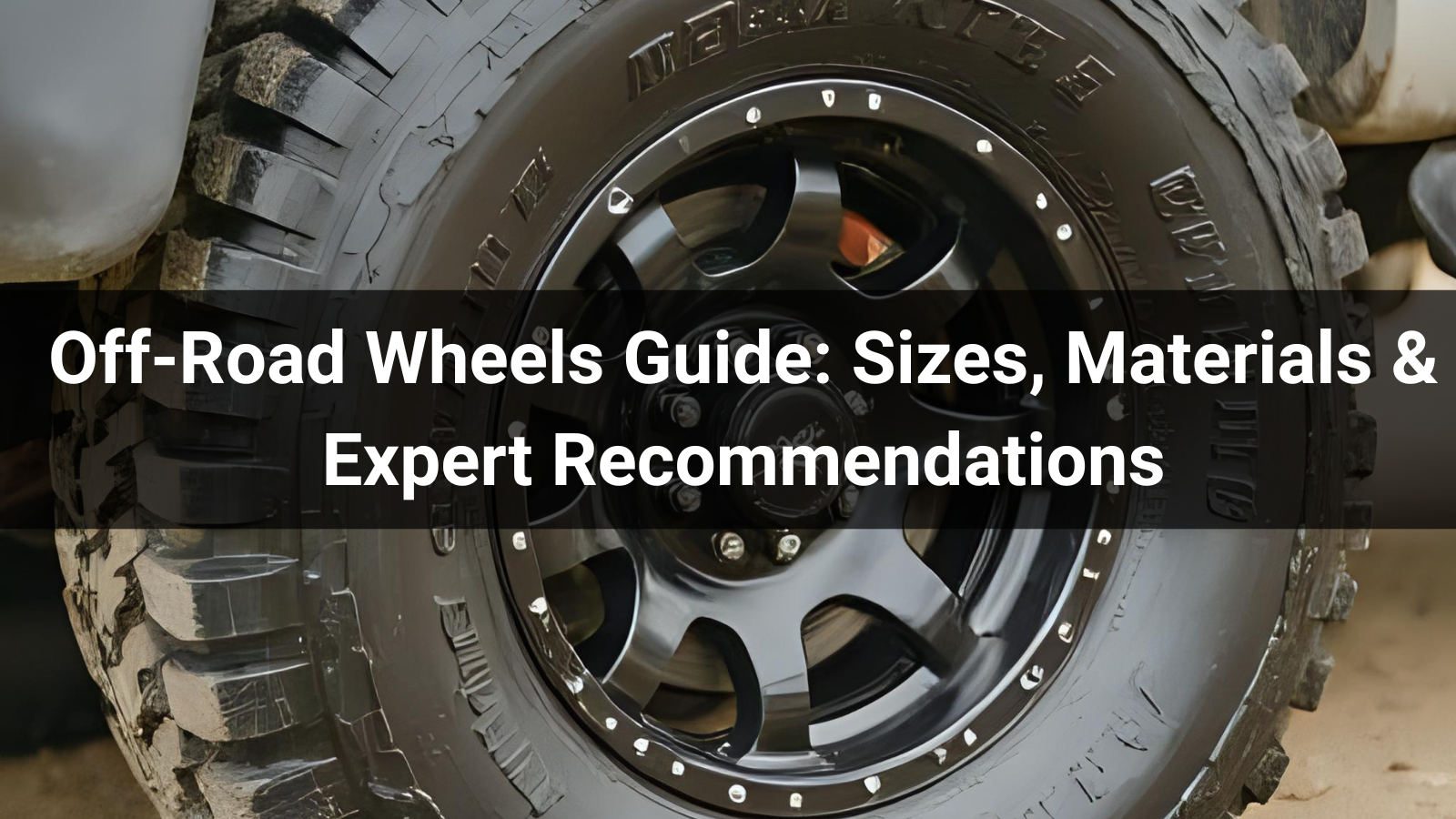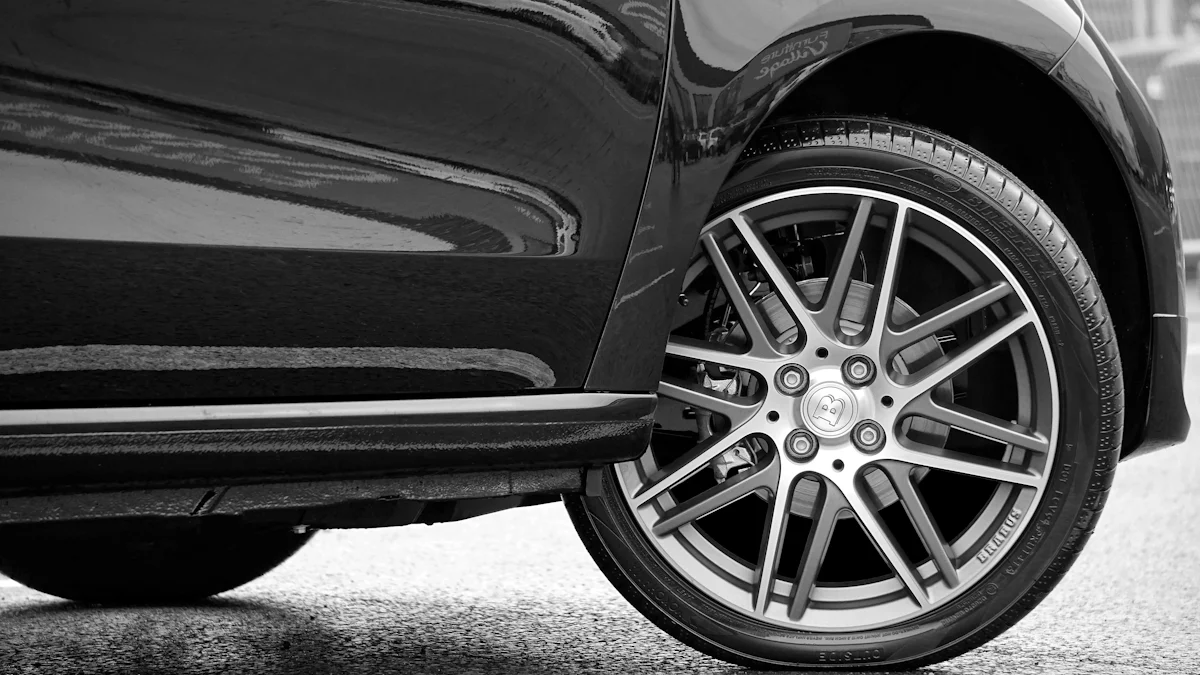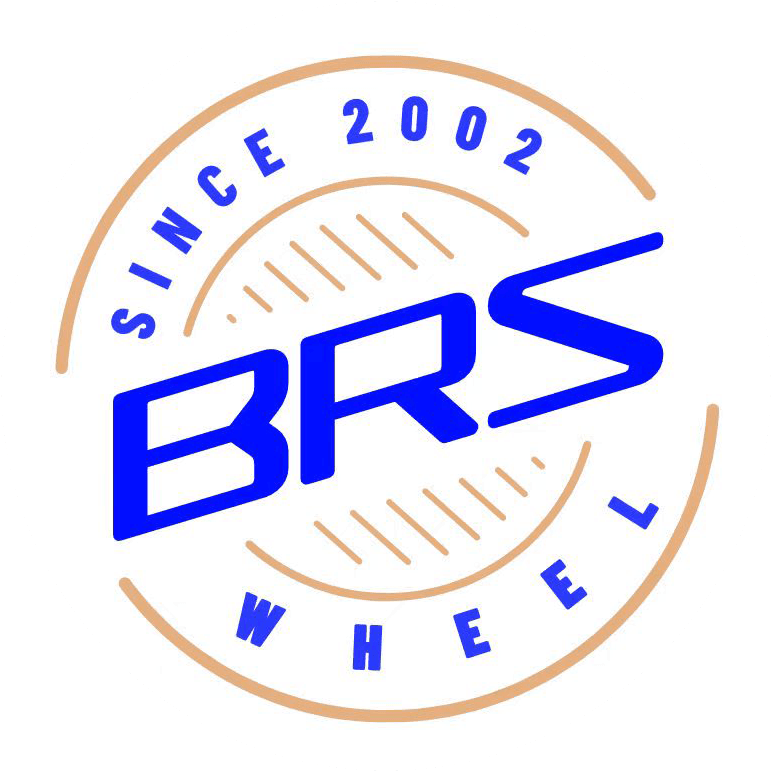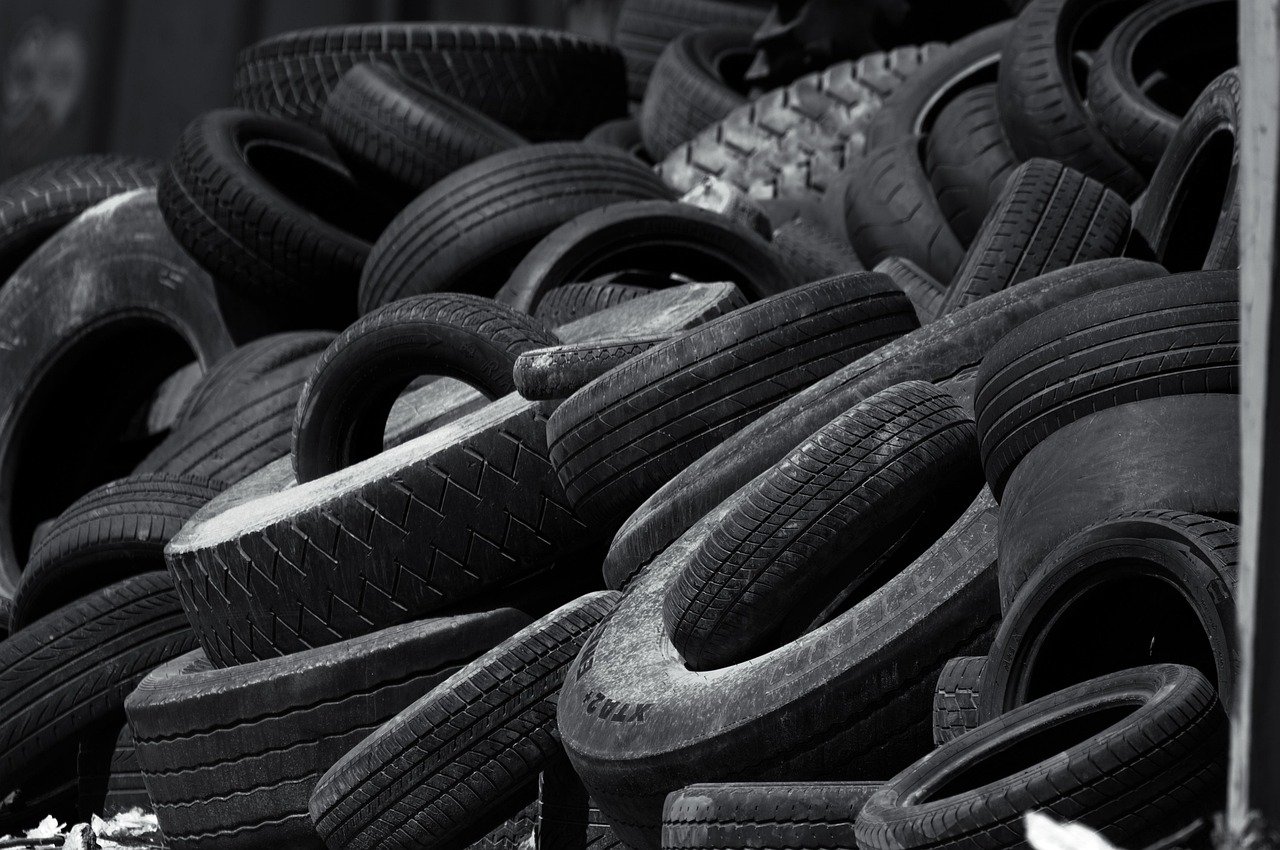
European Trailer Wheels and tires vary in size and strength, adhering to strict regulations. It’s essential for drivers to understand these differences, as tire issues account for over 20% of vehicle violations in Europe. The market for European trailer wheels is expanding rapidly, with sales projected to exceed $1 billion by 2033. Purchasing high-quality products from reputable steel wheel rim manufacturers like Ningbo BRS RIM ensures your safety and enhances your trailer’s performance while complying with European laws. Selecting the appropriate steel trailer wheels and following OEM guidelines can help prevent costly mistakes.
Key Takeaways
Knowing the right size for trailer wheels and tires is very important for safety and how well they work. Common sizes go from 25 inches to over 45 inches. These sizes fit different needs.
Picking strong materials like steel or aluminum makes wheels last longer and work better. Steel wheels are tough. Aluminum wheels are lighter and do not rust easily.
Checking wheels and tires often can stop expensive problems. Look for worn spots, check air pressure, and see if there is any damage before every trip.
Always check for the E-mark when you buy wheels and tires. This mark shows they meet European safety and quality rules.
Picking the right bolt pattern and tire size is very important for a good fit. This helps stop accidents and keeps the trailer safe.
Key features overview
Common Sizes and Dimensions
European trailer wheels and tires have many sizes. These sizes fit different jobs and needs. The most common sizes you will see are:
25-35 inches: These sizes are very popular. Many trailers and wheel loaders use them. They work well for city construction.
36-45 inches: More people want these sizes now. Heavy construction and mining equipment need them.
Above 45 inches: These big sizes are for special jobs. Mining and quarrying use them. They are not seen often but are growing fast.
Picking the right size helps your trailer stay safe and work well.
Understanding Load Rating Standards
Load rating standards help you match the tire to the trailer’s weight. European standards focus on safety and quality. Makers spend a lot on research. This makes European products different from North American ones, which focus on strength and flexibility. Asian products mix old ways with new technology. Good load ratings stop tires from failing and keep roads safer.
Materials Used in Construction
Makers use different materials for European trailer wheels and tires. Each material has its own good points. The table below shows the most used choices:
Material | Advantages |
|---|---|
Steel | Strong and saves money |
Aluminum | Light and does not rust |
Steel wheels are tough and a good deal. Aluminum wheels are lighter and do not rust, so they work well for many uses.
European Design Standards Overview
Strict design rules help make every European Trailer Wheel. These rules make sure the wheels are safe and high quality. The table below shows the main types:
Tire Type | Performance Criteria |
|---|---|
Passenger car tires (C1) | Braking, handling, stability, and stopping water slides |
Light commercial vehicle tires (C2) | Like C1, but for light work vehicles |
Heavy commercial vehicle tires (C3) | Lasts long, wears well, grips heavy loads |
These rules help you pick the right wheel and tire for your trailer. They make sure you follow the law and get good results.
European Trailer Wheel types

Steel vs. Alloy Wheels
European trailer wheels can be made from steel or alloy. Each kind is good for different jobs. The table below shows how they are different:
Feature | Steel Wheels | Alloy Wheels |
|---|---|---|
Weight | Heavier (2.5-3x more than alloy) | Lighter, improving fuel efficiency |
Durability | Highly durable, resistant to cracking | Less durable, more prone to denting |
Traction | Better traction in snowy/icy conditions | Generally less traction due to lighter weight |
Corrosion Resistance | Less resistant to corrosion | More resistant to corrosion |
Design Options | Fewer designs and finishes available | Wide variety of designs and finishes available |
Cost | Generally more affordable | Can be more expensive than steel |
Steel wheels are best for hard work and tough weather. They grip the road better when it is snowy or icy. Alloy wheels are made from things like forged aluminum. They are much lighter than steel wheels. For example, a forged aluminum wheel weighs about 39 pounds. A steel wheel of the same size weighs between 68 and 82 pounds. This makes it easier for trailers to carry more stuff and use less gas. Alloy wheels also help trailers speed up and stop faster. They come in many different looks.
Tip: Use steel wheels for hard jobs and bad weather. Pick alloy wheels if you want to carry lighter loads and save gas.
Leading European Brands
Many companies in Europe make strong trailer wheels. Some make mostly steel wheels. Others make new kinds of alloy wheels. The table below shows the main types you can find:
Size Range | PCD Design | Market Focus |
|---|---|---|
10″ to 16″ | Various | European |
Ningbo BRS RIM is a well-known brand. They sell many sizes and PCD designs for European Trailer Wheels. Their wheels follow strict European rules. They are used in many jobs, like farming and off-road work.
Specialty Wheel Types
Some trailers need special wheels for certain jobs. These special wheels include:
Low Deck trailer wheels, which make the trailer lower for easy loading.
Megatrailer wheels, made for very big trailers that carry more things.
Dura-Flange® wheels, built to be extra strong and last longer.
These special wheels help trailers do hard jobs safely and well.
Trailer tire options
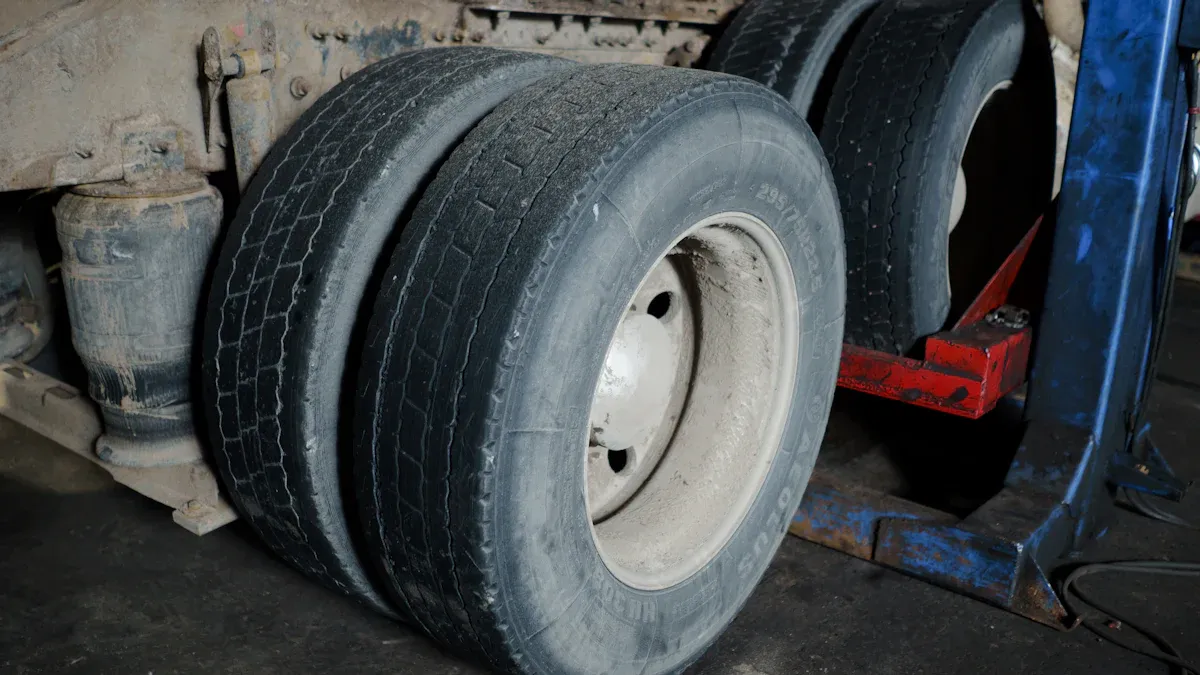
Radial vs. Bias-Ply Types
In Europe, trailer owners pick between radial and bias-ply tires. Each type is good for different jobs.
Radial tires have cords that go straight across the tire. This helps them grip the road better and stay steady. Radial tires do not get as hot, so they last longer. They bend more, which makes the ride smoother. Many people use them for long trips on highways.
Bias-ply tires have cords that cross at an angle. Their sides are stiffer, so they work well on bumpy ground and farms. Bias-ply tires can carry heavy things, but the ride is not as smooth as with radial tires.
Radial tires can now carry heavy loads too. Because of this, most drivers choose them for trailers.
Common Tread Patterns
Tread patterns change how trailer tires work. The right pattern helps tires grip, stay quiet, and last longer. Here are some common types:
Ribbed tread has straight lines. It wears out evenly and keeps trailers steady on roads.
Block tread has block shapes. It grips better on dirt or rough ground. Many farm and off-road trailers use this kind.
Mixed tread uses both ribbed and block shapes. These tires are good for trailers that go on roads and rough places.
Tip: Pick a tread pattern that matches how you use your trailer. This keeps you safe and helps your tires work best.
Extra Load Tire Uses
Some trailers carry very heavy things or go far. Extra load tires are made for these jobs. They have stronger sides and can hold more weight. This stops blowouts and keeps the trailer steady, even when it is full. Many European Trailer Wheel setups use extra load tires for work, farms, or off-road. Picking the right tire helps your trailer follow safety rules and work well in tough jobs.
Fitment and compatibility
Identifying Different Bolt Pattern Types
Picking the right bolt pattern is very important. It helps the wheel fit the trailer the right way. European trailers use many bolt patterns. A bolt pattern is the number of holes and the size of the circle they make. Mechanics measure this to see if the wheel fits the hub. The table below shows what can change if a wheel fits or not:
Factor | Description |
|---|---|
Wheel Centering | Wheels must sit in the middle of the hub. They use hub-centric or lug-centric ways. |
Clearance | The X-Factor is the space between the wheel and brake caliper. |
Lug Nut Compatibility | Lug nuts need to fit the wheel type. Most use conical seat lug nuts. |
Bolt Pattern | The number and size of holes are key for fit. |
Wheel Width | The space from bead seat to bead seat changes fit. |
Wheel Diameter | The size from bead seat to bead seat must be right. |
Wheel Offset | How far the mounting part is from the wheel center changes how it drives. |
Tire Specifications | Section width and aspect ratio must fit the trailer. |
How to Select the Correct Tire Size for Your European Trailer
Choosing the right tire size keeps the trailer safe. Every tire has a code that tells you about it. For example, “ST205/75R14” means:
Component | Description |
|---|---|
ST | Special Trailer; only for trailers |
205 | Section width in millimeters |
75 | Aspect ratio; height is 75% of the width |
R | Radial ply construction |
14 | Rim size in inches |
The load capacity is the most weight a tire can hold.
Bigger tires hold more air and can carry more weight.
Always check the gross axle weight rating (GAWR) to make sure the tire can handle the trailer.
The tire’s outside diameter must fit inside the trailer frame. Using the right tire size helps the trailer work well and stay safe.
Best Practices for Swapping Wheels and Tires
Changing wheels and tires needs care to keep things safe. Mechanics should:
Make sure the tire and wheel fit together before putting them on.
Follow ETRTO rules to match tire width to rim width.
Check tire pressure, tread depth, wheel alignment, and balance often.
Tip: Check your wheels and tires often to stop problems and help them last longer.
European regulations
Understanding ECE Certification Requirements
European trailer wheels and tires must follow strict rules. ECE compliance is needed for all car parts in Europe. The E-mark shows a product meets ECE safety and quality rules. Without the E-mark, companies cannot sell or use wheels and tires on public roads. The E-mark helps buyers find safe products. This rule keeps drivers safe and makes sure every European Trailer Wheel works well.
Note: Always look for the E-mark when you buy trailer wheels and tires. This mark means the product is safe and follows European rules.
Load and speed ratings
European rules set clear limits for load and speed ratings. These ratings help people pick the right wheels and tires for their trailers. The ratings show how much weight a tire can hold and the top speed it can handle. The EU Tire Regulation uses labels to show wet grip, fuel efficiency, and noise. The new EU tire label rule adds truck and bus tires. It shows how well they roll and their performance.
Regulation/Directive | Description |
|---|---|
Commission Regulation (EU) No 458/2011 | Sets rules for motor vehicles and trailers about tire safety and installation. |
EU Tire Regulation | Uses labels to show wet grip, fuel use, and noise. |
New EU tire label regulation | Adds labels for truck and bus tires, showing rolling resistance. |
Tip: Look for tire labels that show wet grip, fuel use, and noise. These labels help you choose the best tires.
Comprehensive Safety Inspection Procedures
Safety checks keep trailers safe and stop accidents. Heavy vehicle drivers in the EU must check their trailers often. The DVSA says drivers need to do daily walkaround checks. Drivers must show inspection reports during roadside stops. Good steps include:
Check for loose, missing, or broken bolts on hubcaps and wheels. Look for rust or dark marks.
Look for leaks on the hubcap and other parts. Change any damaged pieces.
Check oil levels and condition in oil hubs. Make sure the sight glass is clear and dry.
Look at the wheel and brake parts for leaks. Fix any wet seals before driving.
Check brake drums or rotors for damage or too much wear.
Safety Tip: Regular checks help stop breakdowns and keep trailers safe on the road.
Maintenance tips
Inspection routines
Checking trailer wheels and tires often helps them last longer. Mechanics need to look at the lubricant in the hubs. If the lubricant is low or dirty, it can hurt the wheel parts. Looking at the wheels can show if bolts are loose, hub caps are broken, or if there are leaks. Drivers who check before trips can find problems early. Skipping these checks can cause wheels to come off and cost a lot to fix. Many experts say pre-adjusted hubs make fixing things faster and easier.
Tip: Checking your trailer often keeps it safe and stops sudden problems.
Table: Essential Inspection Steps
Step | Purpose |
|---|---|
Lubricant Check | Stops damage to the hub |
Visual Inspection | Finds broken or loose parts |
Pre-Trip Inspection | Finds problems before you travel |
Hub Specification | Makes fixing things simpler |
Best Practices for Cleaning and Proper Storage
Cleaning and storing wheels and tires the right way keeps them safe. Mechanics use water, a soft brush, soap, and gentle cleaner to clean off dirt and rust. Clean every two or three weeks if you use the trailer a lot. If you use it less, clean it once a month, especially after it gets dirty from salt, mud, or dust. Keep wheels and tires dry and covered to stop rust and sun damage. Lifting the dolly keeps tires from getting flat spots and helps the suspension. Use covers that block weather if you cannot keep them inside.
Use soft cleaners so you do not scratch the wheels.
Keep wheels and tires in a dry, covered place.
Lift the trailer so tires do not get flat spots.
Cover them with weather-proof covers if outside.
Note: Cleaning and storing wheels and tires the right way keeps every European Trailer Wheel looking good and working well.
When to Replace Your European Trailer Wheels and Tires
Knowing when to get new wheels and tires keeps trailers safe. If the tread is less than 2/32 of an inch, the tire is not safe. If tires lose air a lot, they may have leaks or damage. Cracks, bulges, or other marks mean the tire or wheel is weak and could break. Mechanics should look for these signs often.
Use a gauge to check how deep the tread is.
Watch if the tire loses air a lot.
Look for cracks, bulges, or other damage.
Safety Alert: Change wheels and tires as soon as you see damage or wear to stop accidents.
Buying European Trailer Wheel
Where to Buy European Trailer Wheels and Tires
You can buy European trailer wheels and tires online or in stores. Many good websites have lots of choices. They sell steel wheels, alloy wheels, tires, and sets. Local shops and dealers also have certified wheels and tires for trailers. The table below shows trusted online places to buy these products:
Category | Link |
|---|---|
Trailer Wheels | Trailer Wheels |
Trailer Tires | Trailer Tires |
Tire & Wheel Combos | Tire & Wheel Combos |
All On Sale | All On Sale |
Tires On Sale | Tires On Sale |
Wheels On Sale | Wheels On Sale |
Premium Hankook Trailer Tires | Premium Hankook Trailer Tires |
Trailer Rims | Trailer Rims |
Aluminum Trailer Wheels | Aluminum Trailer Wheels |
How to Identify Quality and Avoid Fakes
Buyers need to check a few things to get real, strong wheels and tires.
The material and how it is made help it last and stay safe.
Size, load capacity, and bolt pattern must fit your trailer.
Certifications and maker rules show if it is real.
The tire’s diameter, width, offset, and center hole must match.
The load capacity should be right for your trailer.
To keep away from fake products, do these steps:
Ask the seller for real papers.
Do not buy used wheels and tires.
Only buy from approved dealers.
Look at brand names for spelling mistakes.
Check if the wheel is strong and looks good.
Make sure tire markings are clear and correct.
See if the specs match real products.
Get paperwork for every buy.
Tip: Real wheels and tires always have good papers and clear markings.
Top Brands: Ningbo BRS RIM & Trusted Suppliers
Ningbo BRS RIM is a trusted company for European Trailer Wheel products. They have many sizes and PCD designs for different jobs. Buyers can ask for custom logos for their brand. You can pick pallets or cartons for safe shipping. Their machines can put tires and wheels together, which saves time. Good suppliers like Ningbo BRS RIM follow strict European rules. They give safety and good performance for every trailer owner.
Picking the right European Trailer Wheel keeps drivers and cargo safe. Good wheels and tires help trailers work better and follow the law. People should look at the specs and make sure wheels fit their trailers. Checking and fixing wheels often helps them last longer. Trusted suppliers like Ningbo BRS RIM sell strong wheels and give good help. If you have questions, ask experts so you pick the best wheels for your trailer.
FAQ
What makes European trailer wheels different from other regions?
European trailer wheels must follow ECE rules. These wheels have special sizes and bolt patterns. They also use set load ratings. Makers build them to be safe and follow European laws.
How can someone check if a trailer wheel is genuine?
Buyers should look for a clear E-mark on the wheel. The branding should be correct and specs must match. Good sellers give paperwork and clear marks. Do not buy used or unchecked wheels. This helps stop fake products.
Why is the correct bolt pattern important?
The bolt pattern helps the wheel fit the trailer hub right. If you use the wrong pattern, it can be unsafe. It may hurt the wheel or make it break. Always use the bolt pattern your trailer needs.
How often should trailer wheels and tires be inspected?
Experts say to check wheels and tires before each trip. Regular checks help find damage or low tread. They also spot air leaks early. Finding problems early stops accidents and helps tires last longer.
Can Ningbo BRS RIM provide custom trailer wheels?
Ningbo BRS RIM can stamp custom logos on wheels. They offer many sizes and ways to pack wheels. Their assembly service gives ready-to-use wheels and tires. Customers can ask for options that fit their needs.
